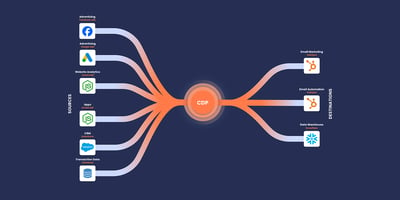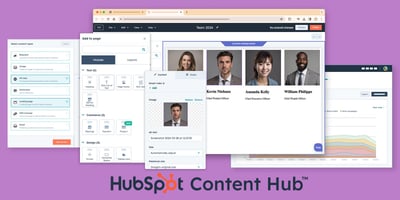Data migration is one of the most important factors when it comes to implementing a CRM. So much so that it can be considered an entire project of its own. By migrating your business’ historical data, you’ll ensure that your teams can report on effective sales strategies, avoid unnecessary effort, and improve sales velocity.
Making the shift to a new CRM system can be a daunting task though. There are a lot of risks involved in the process of moving crucial data and information over and placing it securely into a new system. In addition, you don’t want to lose anything in the migration process.
Set out a data migration plan
If you’re implementing a CRM system, you may need to both migrate and integrate several systems. Even after you’ve finished migrating, you’ll need to thoroughly audit your work. All of these elements need to form part of your data migration plan.
- Auditing exposes any potential roadblocks to your CRM projects’ success.
- Building a clear migration plan can save your business’ team members months of effort.
Having a clear CRM Migration Plan increases the likelihood of a successful implementation. You’ll encounter fewer obstacles, and the ones that you do encounter won’t derail the entire project. Being able to measure your progress and visualise your plan will help drive your team towards a successful implementation.
Three CRM migration plan steps
A CRM migration plan can be split into three ordered steps:
- Double-check objects (both standard and custom), records, associations, and properties to ensure that no data will be missed in the migration.
- Analyse key reports and lists from your previous system to make sure they can be recreated (or improved) in the new CRM.
- Perform a “delta migration” to transfer any newly modified data that may have been left out of your initial migration.
Identify the data that needs to be migrated
The second step in the data migration process is to identify the data elements that need to be migrated. While it might sound simple enough, it’s easy to miss important data during the migration process if you don’t have clear guidelines on what you are shifting over to your new CRM.
What data to identify to migrate
Here’s an example of identifying migration data:
- Contact information.
- Demographic information.
- Customer interaction logs.
- Customer preferences
- Customer purchase history
While these are general guidelines, the specific data that you migrate into your CRM will differ based on your business.
Once you’ve identified the data that needs to be migrated, it’s also important to take care of data structures. Data structures refer to the method that is used to store, organise, monitor, and change the data elements.
Data quality assessment
Analysing your data is just as important when it comes to the data migration process. Oftentimes the data being migrated is not up to date or needs to be altered in some way to ensure that it remains accurate and relevant.
During the quality assessment, your goal is to ensure that the most important data is transferred over to the CRM. This means deleting outdated or duplicated data as well as any data that is no longer relevant to your business.
Data mapping
Data mapping is another important step you need to take before the migration of your data. This process involves drawing up a “map” of where your data will reside once it’s been implemented into the CRM.
This process ensures that your data is migrated to the correct location in the CRM. You need to make sure that the data migrates precisely and consistently if you want to ensure that your CRM implementation is a success.
What to data map
There are six elements that you need to consider when creating a data map:
- Identify the data groups that need to be migrated.
- Analyse the data entries that fall under respective groups.
- Double check the format of the data after migration.
- Determine whether the migration process will be manual or automated.
- The frequency of data transfers.
- Customisations in the CRM tool that may affect the data migration.
Create a backup of your data
Data is essential for any business. Losing data can be devastating, and migration can sometimes be a risky process. Before your data migration process starts, it’s crucial that you back up your data.
It’s always a good idea to back up your data to secure cloud storage which is more reliable than physical media devices such as hard drives. However, it’s also beneficial to create a backup on both formats if you have the time to do so.
Test your migration first
Testing your data migration before the process is vital. There’s a lot that could go wrong during data migration — data could be lost, transferred to the incorrect location, or there might be an error with your entire migration process.
The best way to test your migration is to select a portion of your data to transfer and see if it works as you intended. If you do encounter any errors during the migration process, it will be much easier and quicker to rectify them with a small portion of your data as opposed to all of it.
Migrate your CRM data
Once you’ve gone through all the checks and prerequisites, it’s finally time to migrate your data into the CRM. If you’ve followed all the steps correctly, the data migration process will be seamless, and you shouldn’t be encountering any errors or loss of data.
What to migrate
Make sure you migrate the following:
- Standard and custom objects, if you’ve determined their need for custom objects in the new CRM
- Properties (for all standard and custom objects)
- Parent/child relationships in relevant objects
- Object and data associations
Evaluate your data migration
Once your data migration process has been completed, you need to check everything to ensure that the process was completed successfully and there are no errors. It's essential to check if your most important data has transferred over before you start using your CRM full time.
What to evaluate
You should evaluate the following elements:
- All objects (as far as possible) have been migrated (or integrated appropriately).
- All properties/fields/tags related to the objects have been migrated (or integrated appropriately).
- All associations between objects and properties have been migrated (or integrated).
- All physical data has been imported, such as data stored in physical files or folders.
Final Words
Data is the most important asset that any business could have. It’s crucial to ensure that all of your data is transferred to your CRM securely. , Lost data can severely harm a business, so make sure to handle the CRM migration process with care. By following the correct steps you can migrate all of your crucial data safely and ensure that your CRM is fully up to date with all your necessary information.





